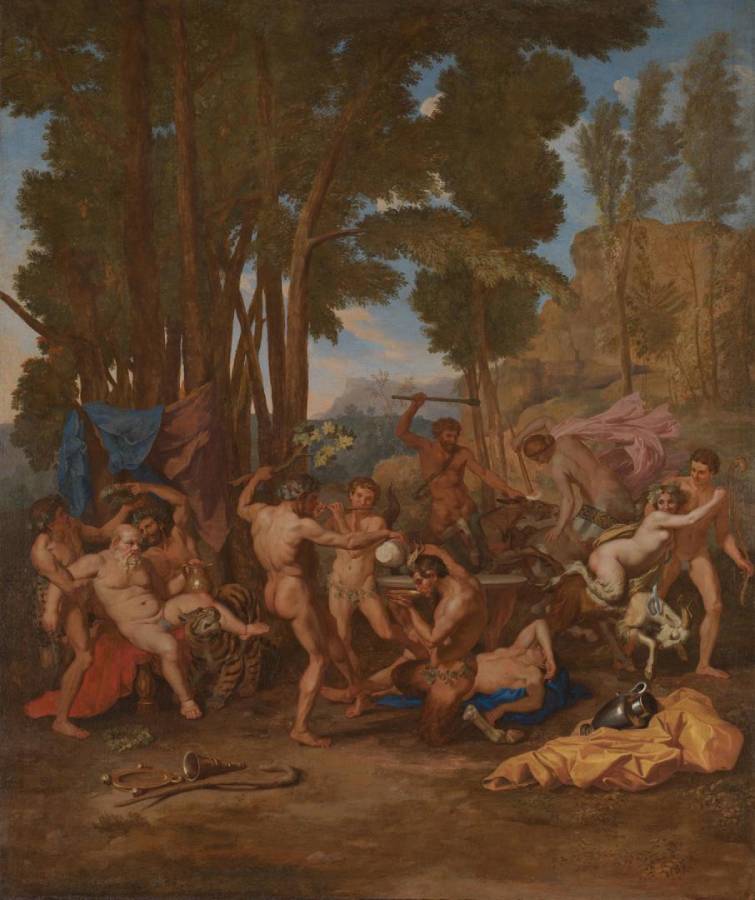Poussin, Nicolas (1594-1665)
Le Triomphe de Silène (The Triumph of Silenus)
c.1636
Oil on canvas, 142.9 × 120.5 cm
National Gallery, London
This playful scene celebrates Silenus, companion to Bacchus, the Roman god of wine and drunkenness. Silenus, a naked old man with a bald head, sits slumped on a throne to the left, supported by two men. He rests his hand on a jug of wine. Too drunk to stand, he balances one leg precariously on a tiger, although he is often shown in paintings riding an ass. The garland at Silenus‘ feet and the wreath being lowered onto his head are mentioned in Virgil’s Eclogues, a series of poems on pastoral themes (book VI, 1:16). They were worn during Roman festivals and banquets devoted to Bacchus.
The revellers remove their clothes and enjoy the festivities as they drink and dance. The flute player in the centre stares towards us, inviting us to join the party. On the right, a shepherd seduces a female satyr, who symbolises lust. In the background, two centaurs with human bodies and horses’ legs attack an ass. The idealised and muscular physique of the men reveals Poussin’s study of statues from classical antiquity. The composition is complex and sophisticated, with trees and rocky cliffs framing the scene. The faded colouring of the draperies hanging in the trees was once vibrant.
The people and setting are similar to Titian’s Andrians (Prado, Madrid) which Poussin may have seen in Rome. The frieze-like composition, with the people and trees evenly placed across the painting, is inspired by images on ancient Roman stone coffins, known as sarcophagi.
Around 1636 Poussin painted three bacchanalian scenes for the home of the powerful French minister, Cardinal de Richelieu (1585–1642): a scene depicting Silenus, The Triumph of Pan (in the National Gallery, London) and The Triumph of Bacchus (Nelson-Atkins Museum, Kansas City). At some point before 1741 all three of Poussin’s Triumphs were replaced with copies (now in the Musée des Beaux-Arts, Tours). Despite the copy after Richelieu’s Silenus painting being identical in design to this work, most scholars since the mid-twentieth century have cast doubts over the latter’s attribution to Poussin. This was, in part, due to the painting’s discoloured varnish and uneven finish: some figures appear rather coarsely painted whilst the objects in the foreground are rendered meticulously. Recent conservation treatment and technical analysis, revealing changes made to the composition during the painting process, undermine the argument that this work is a copy and point instead to it being Poussin’s original. (NG)
See also:
• Richelieu, Armand Jean du Plessis de (1585-1642) | Virgil (70 BC-19 BC)
